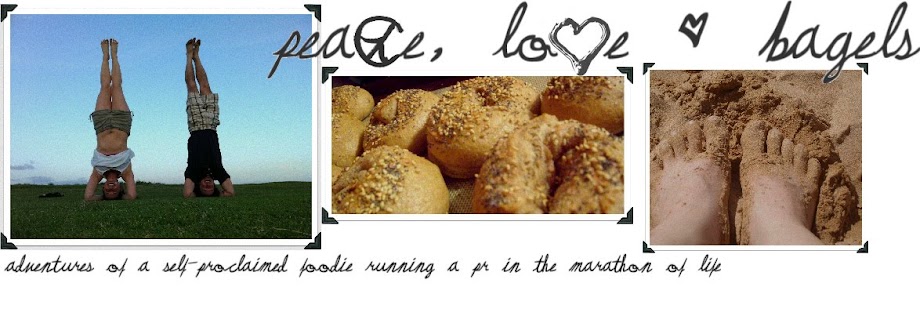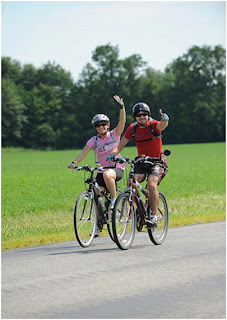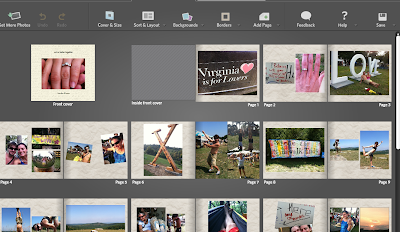
{photocred:tapperass.wordpress.com}
If you haven't noticed in my last few running posts (specifically this one) my master plan to stay in good racing shape involves a lot of cross training. For me, that comes in two forms; yoga and body-weight circuits.
I am not a member of a gym and, even though I love me some free weights, I don't really feel like putting up the cash for something I can essentially accomplish at home (plus, I'm a spinning instructor on hiatus, and paying for a gym membership is completely foreign to me).
Well, I've got some news. It turns out you DON'T need a gym and weights or machines to strength train. This isn't the first time I've said this (ahem, 100 pushups) but I'm here today to give you guys somewhere to start if you're coming up empty on the "ideas for new workouts" gauge.
The following is a half hour body-weight circuit geared towards toning muscles. It requires zero equipment and about ten feet of floor space.

|
| (that's my mom. isn't she awesome?!?) |
WARMUP:
2 minute light jog in place. Don't forget to stay on your the balls of your feet.
1 minute plank. Feel free to shimmy around in your plank, as long as you keep your body in one straight line, it will activate different abdominal muscles.
2 minutes alternating straight leg kicks, you can also walk and kick if you have the room.
2 minute recovery - stretch, drink water, breathe.
2 minutes alternating step back lunges, keep your weight in your front leg, drive with your back leg
2 minute sumo squat with press (with or without dumbells - you still get a shoulder workout without them)
30 seconds squats
30 seconds squat jumps
1 minute pushups with feet elevated (on a medicine ball or exercise ball if you have one)
2 minutes single leg deadlift with reverse fly (no weights is a-ok, I just couldn't find a video of what this looks like together - basically you go into your deadlift and then pull your arms out for the fly, then stand up straight again)
1 minute recovery
1 minute pushup plank to row
2 minute russian twists
1 minute knee tucks
1 minute plank walks (holy harder than it looks)
2 minute single leg deadlifts
1 minute froggers
1 minute two foot forward/backward jumps (exactly how it sounds, jump forward and backward with both feet as fast as you can)
COOL DOWN:
COOL DOWN:
5 minutes stretching - quad stretch, hammy stretch, lower back twists. Just stay in these positions for 30 seconds - 1 minute per side.
Still think you have to go to a gym to get a good workout? Seriously, you have to try this out. I did a 45-minute body weight circuit the other day and was sweating like a maniac. If you're not used to it, you'll definitely be a little sore a day or two after you work through this.
How do you get in strength training without a gym?
















